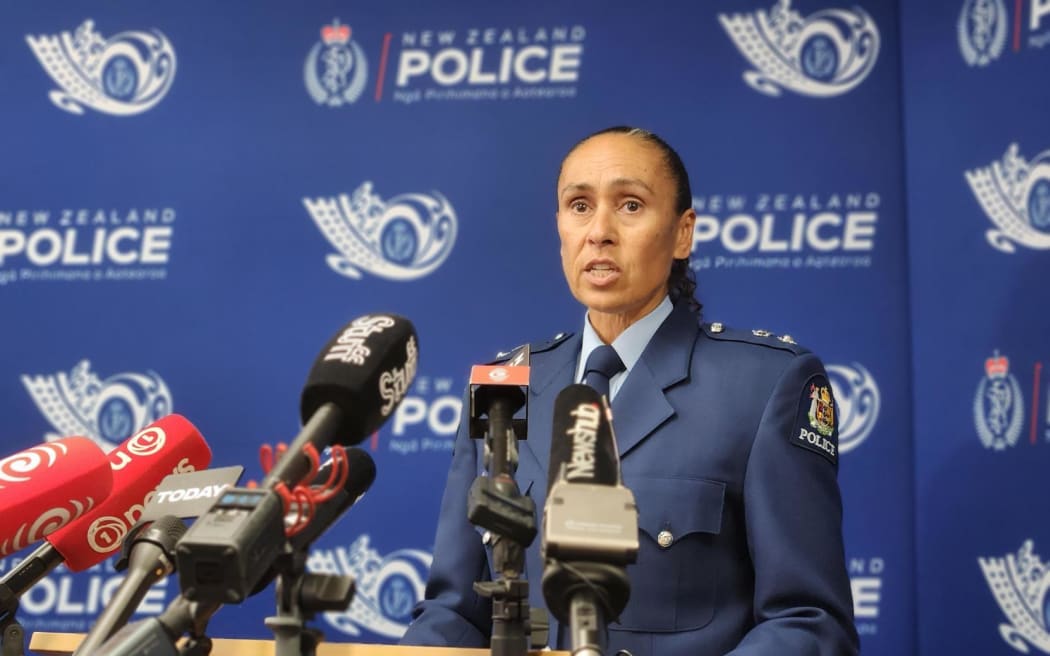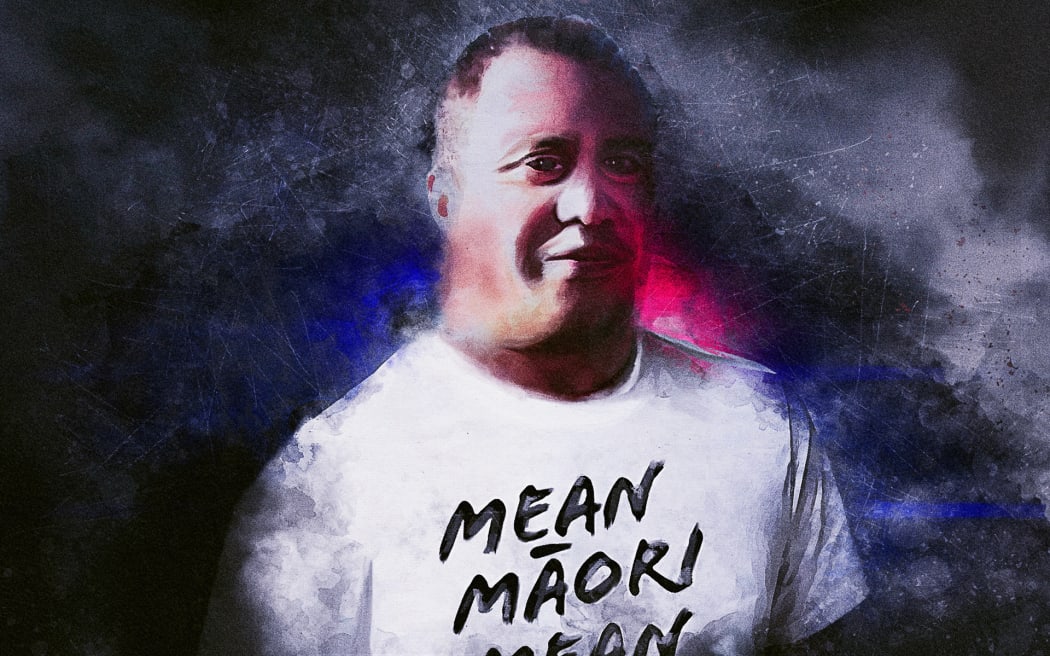
The system for police bail checks lacks national oversight, a review by police says. Photo: RNZ/Vinay Ranchhod
An internal police report paints a picture of a broken bail system, with checks on offenders who are "convenient to check rather than high priority".
The Bail Project Management Report, obtained by RNZ under the Official Information Act, shows police sometimes needlessly hassle low risk offenders while failing to monitor dangerous ones.
The report says just 0.4 percent of offenders - one in 250 - are automatically flagged as high risk, not because the proportion of high risk offenders is that low, but because police IT systems are not fit for purpose.
Police Deputy Commissioner Naila Hassan told RNZ the police IT system was "far under-estimating" the proportion of high risk offenders.
"We are aware of the flaws in the bail risk assessment. That's why we're making changes," she said. "Districts currently do workarounds in order to better prioritise the more high risk offenders. So we've got a plan to update the system. We accept it's not fit for purpose."
The report was done in response to the fatal police shooting of Shargin Stephens in Rotorua in 2016. Stephens was shot after he smashed up an empty police car with a slasher. The Independent Police Complaints Authority (IPCA) said excessive bail checks may have tipped him over the edge.
A system in disarray
The review of police bail management, recommended by the IPCA in response to the Stephens shooting, shows a system in disarray.
"There is no clear policy or guidance on how to conduct a reasonable bail check," it says. "Current bail checks tend to focus on quantity over quality, for example checking bailees that are convenient to check rather than high priority".
The report says staffing is a "huge constraint" with most bail checks done by front line staff who were already busy, putting pressure on police and creating tension for the family of the offender.
"Staff attitude during bail checks may be antagonistic and a disruptive negative experience for the entire household," the report says.
"We don't get any pleasure in waking up households and disrupting whānau as we do those bail checks," Deputy Commissioner Hassan told RNZ. "We do the best we can to make sure that that offender is complying."

Police Deputy Commissioner Naila Hassan Photo: RNZ / Finn Blackwell
Offenders often face bail conditions which make no sense, setting them up to fail and wasting police time on "needless arrests for low level bail breaches," the report says.
"It is common for bail conditions to not be relevant to managing bail risk or not fit the alleged offence."
It gives examples of an offender on night-time curfew who had only ever offended during daylight hours and a drug addict with a bail condition to not consume alcohol when there was no history of alcohol-related offending.
Growth of electronically monitored bail
The report describes a bail system creaking under the weight of a dramatic increase in the use of electronically monitored (EM) bail.
The total number of people on bail has actually dropped from about 45,000 to 40,000 over the last five years.
But the numbers on EM bail have exploded: from 230 in 2014 to more than 2000 today - with a further 35 percent increase expected over the next 18 months.
Offenders on EM bail were eight times more likely to breach their conditions than an offender on home detention. "Analysis indicates this is because an offender on EM bail is not provided support in the same way as an offender on home detention who has an assigned probation officer."
The report is highly critical of the way bail is managed. "Monitoring is very limited. Compliance with policy and best practice is not actively monitored," it says. "There is no national oversight. Oversight at district levels varies but generally focuses on quantity rather than quality of checks."
Corrections and police have jointly managed bail since 2014. Corrections is supposed to notify police if EM bail conditions are breached but "there are many examples of this process failing - both breaches not being notified and police not responding to breaches," the report says.
"Volumes of breaches are not manageable and police do not have the resources available to respond to every EM bail breach."
Undercount of 'high priority' offenders
Police use a Bail Management Application (BMA) to calculate a risk score but this does not enable them to target a specific crime trend and the "offender's complete offending history is not taken into account".
The risk score delivered by the app flags just 0.4 percent of offenders as high priority for bail checking.
When police manually flagged high risk offenders, 13 percent of those on bail were prioritised as high priority, suggesting its IT system vastly underestimates the number of high risk offenders.
But the guidelines used to determine if an offender is high priority vary across police districts and are often out of date, the report says.
"There is no ongoing monitoring to assess if the risk scores are still accurate and reflect recent bailee behaviour trends or police priorities".

Shagrin Stephens was subjected to "excessive and unreasonable" bail checks, the IPCA concluded after re-examining his case. Photo: RNZ/Vinay Ranchhod
Police making changes
The report is a response to IPCA findings in the police shooting of Shargin Stephens, who lashed out and smashed up a police car after being bail checked 70 times in 38 days.
In its initial 2017 report the IPCA said the bail checks, which took place at all hours of the night, were reasonable and not a factor in his death.
But after RNZ obtained documents showing large discrepancies in the official story the IPCA reopened the case and issued a new report in 2022.
"Given Mr Stephens was being electronically monitored, this frequency of bail checking was excessive and unreasonable," the IPCA said in its revised report.
The IPCA said police were entitled to check Stephens was not breaching his bail conditions by using alcohol and drugs. "But to check him 70 times over 38 days, sometimes multiple times at night, was oppressive," the IPCA said. "This is especially as police found no evidence of Mr Stephens not complying with these conditions."
One of the 15 recommendations in the bail review relates to offenders, like Stephens, who are subject to multiple bail checks.
Police will change their policies to ensure that offenders who had been checked more than three times in the previous 12 hours would be automatically flagged by the police IT system.
Further checks would have to be approved by a supervisor and police would then opt for education, support and warnings with arrest used as a last resort.
Police have also appointed a National Bail Coordinator, a new position aimed to ensure national consistency in bail management and embed a new way of thinking about bail.
"A culture/mindset is needed so that the focus of bail checks becomes quality not quantity," the report says.
"Bail checks should be targeted at both high priority offenders and bailees who would most benefit from proactive engagement to enable rehabilitation and prevent crime."
Deputy Commissioner Hassan told RNZ that police had gone "a great deal further" than the IPCA recommendations.
"We've taken a thorough look at our practices, guidance and training. We want to make sure all of our checks are fair and reasonable and make a positive impact on the bailee, and their success while on bail, as well as keeping our community safe."


